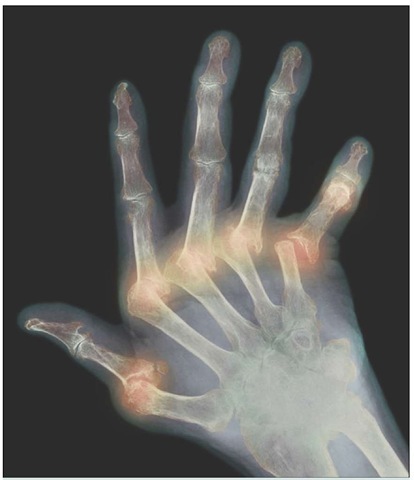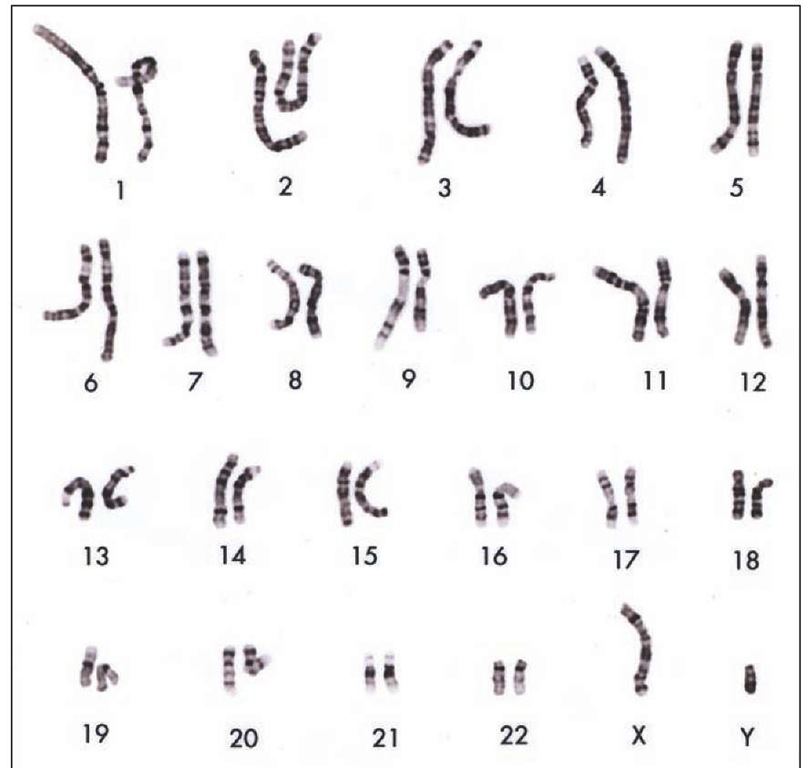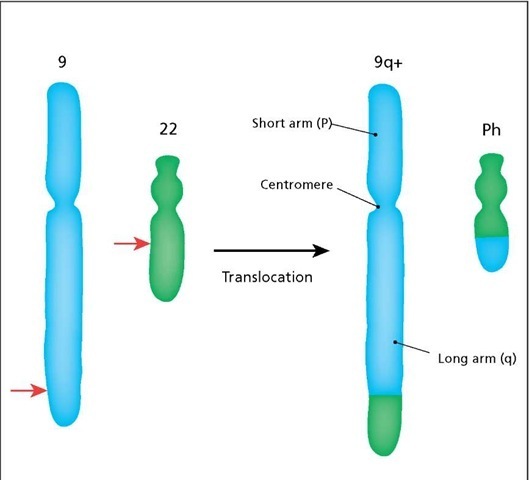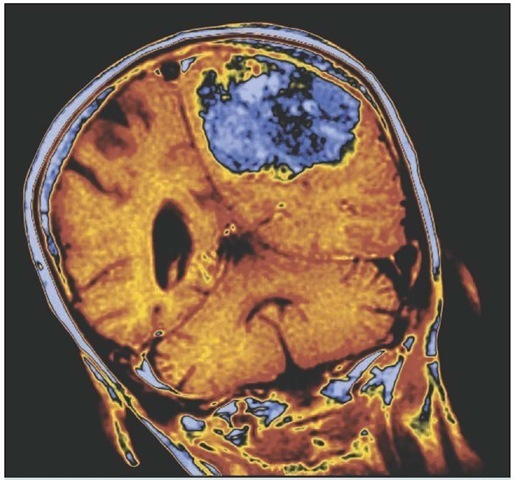ARTHRITIS
Although the term literally means "joint inflammation," arthritis really refers to a group of more than 100 rheumatic diseases and conditions that can cause pain, stiffness, and swelling in the joints. If left undiagnosed and untreated, arthritis can cause irreversible damage to the joints. There are two forms of this disease: osteoar-thritis and rheumatoid arthritis.
Arthritic hand. Colored X-ray of the deformed hand of a patient suffering from rheumatoid arthritis. The patient’s fingers are abnormally bent because of damage to the joints (orange). Rheumatoid arthritis is an autoimmune disorder. It occurs when the body’s immune system attacks joint tissue, commonly in the hands and feet. Affected joints become inflamed and painful, limiting movement. There is no cure for the disease, but anti-inflammatory drugs and immunosuppressants may relieve the symptoms. Physiotherapy can help to keep the joints supple, and special tools may compensate for the lack of mobility.
Osteoarthritis, previously known as degenerative joint disease, results from the wear and tear of life. The pressure of gravity and extensive use causes physical damage to the joints and surrounding tissues, leading to pain, tenderness, and swelling. Initially, osteoarthritis is noninflammatory, and its onset is subtle and gradual, usually involving one or only a few joints. The joints most often affected are the knee, hip, and hand. Pain is the earliest symptom, usually made worse by repetitive use. Osteoarthritis affects 21 million people in the United States, and the risk of getting it increases with age. Other risk factors include joint trauma, obesity, and repetitive joint use; examples of the latter include pitcher’s elbow and the hip joint difficulties that professional dancers develop as they grow old.
Rheumatoid arthritis is an autoimmune disease that occurs when the body’s own immune system mistakenly attacks the synovium (thin tissue layer lining the joints). This chronic, potentially disabling disease causes pain, stiffness, swelling, and loss of function in the joints. The cause of this disease is unclear, but could involve a mutation that affects the glycocalyx of the synovium, leading to an immune attack. As described above, autoimmunity may also be responsible for the death of neurons in AD. Rheumatoid arthritis is much rarer than osteoarthritis, affecting about 2 million people in the United States. This disease affects women much more than men (the difference is twofold to threefold) and has led many scientists to suggest it is related to the decline of estrogen levels that occurs in women after menopause. Current treatment involves hormone supplements, but this can place the patient at high risk of developing breast or uterine cancer, as well as cardiovascular disease.
Cancer
Cancer is a genetic disease brought on by the inappropriate expression or mutation of one or more genes. Oncologists (scientists who study cancer) have identified two types of cancer genes: the oncogenes and the tumor suppressor genes (TSGs). Oncogenes code for proteins that stimulate cell growth and cell division, whereas tumor suppressor genes are involved in repairing and maintaining the genome. TSGs also code for proteins that monitor cell division to make sure that all chromosomes are duplicated and aligned properly before the cell divides. Overexpression of an oncogene can force a cell to proliferate (grow and divide), a common characteristic of cancer cells. A mutation in a TSG, which inactivates the gene product, can lead to cancer development because the cell loses the ability to repair its genome and to monitor the cell cycle.
Normal cells become cancerous through a process called transformation, leading to the uncontrolled growth of the cancer cells, which produces a tumor or neoplasm. As long as the tumor remains intact and the cells do not try to invade other parts of the body, the tumor is considered benign and can usually be treated by surgical removal. Tumors become dangerous and potentially deadly when some of the cells develop the ability to leave the main tumor mass and migrate to other parts of the body, where they form new tumors. When this happens, the cancer is malignant and will spread throughout the body by a process known as metastasis. Malignant cancers can be very difficult, if not impossible, to treat. The danger associated with all tumors is that they will switch from benign to malignant before being detected.
Cancers are classified according to the tissue and cell type from which they arise. Cancers that develop from epithelial cells are called carcinomas; those arising from connective tissue or muscles are called sarcomas; and those arising from blood-forming tissue, such as the bone marrow, are known as leukemias. More than 90 percent of all human cancers are carcinomas. Cancer names are derived from their cell type, the specific tissue being affected, and whether the tumor is benign or malignant. An adenoma, for example, is a benign tumor originating in the adenoid gland, or other glandular tissue, which consists of epithelial cells. A malignant tumor from the same source is called an adenocarcinoma. A chon-droma is a benign tumor of cartilage, whereas a chondrosarcoma is a malignant cartilage tumor. Some cancer names can be real tongue twisters: A type of leukemia that affects blood-forming cells is called myelocytomatosis.
Cancers generally retain characteristics that reflect their origin. One type of skin cancer called basal-cell carcinoma is derived from keratinocytes and will continue to synthesize keratin, the protein of hair and nails. Another form of skin cancer called melanoma is derived from pigment cells and is associated with overproduction of the skin pigment melanin. It is for this reason that these tumors are usually very dark in color. Cancers of the pituitary gland, which produces growth hormone, can lead to production of excessive amounts of this hormone, the effects of which can be more damaging than the cancer itself.
When oncogenes and TSGs were discovered in the 1980s, many scientists believed that cures for all cancers were just around the corner. Their optimism was grounded in the assumption that these genes were the root cause of cancer. But after two decades of research, oncologists have failed to identify a particular set of oncogenes or TSGs that are typical of the most common forms of cancer. Moreover, the list of oncogenes and TSGs keeps increasing (currently, there are more than 100 known oncogenes and 15 TSGs). This could mean that each cancer is unique and that cellular transformation can occur through many different routes. Recent comparisons between normal human karyotypes and karyotypes from cancer cells suggest that the activation of an oncogene or the mutation of a TSG is the result of a prior event (or events) that corrupts the entire genome.
A normal human ka ryotype. A ka ryotype represents the full set of chromosomes arranged with respect to size, shape, and number. Human cells contain 23 pairs of chromosomes, 22 autosomes and a pair of sex chromosomes. The sex chromosomes are either "X" or "Y." Females have two "X" chromosomes, whereas males have an "X" and a "Y" chromosome. Karyotypes are used to diagnose genetic illnesses and are also used to characterize different forms of cancer.
Consequently, a typical cancer cell karyotype is radically altered, so much so that the interior of the nucleus sometimes looks shattered. Some of the chromosomes break apart into smaller fragments, some of which fuse with other chromosomes. The fusion process is usually associated with the destruction of genes on the host chromosome, thus amplifying the damage. In addition, whole chromosomes, often containing more than 1,000 genes, are sometimes lost or duplicated during cell division. These abnormalities, known as aneuploidy, alter the normal gene expression profile of the cell with disastrous consequences. The net effect is the destruction of the highly ordered filing system that is typical of a normal genome. Consequently, if the transcription machinery receives an order for a particular protein, it cannot fill the order simply because it is unable to find the gene among the rubble of what was once a functional genome. In the case of a duplication, as mentioned above, the transcription machinery might find the gene, but may end up delivering too much of the required protein, which can be enough to drive the cell even closer to transformation.
A classic example of chromosomal damage that can occur is the Philadelphia chromosome (so named because it was first identified in that city). This chromosomal abnormality involves the partial fragmentation of chromosomes 9 and 22, followed by an exchange or translocation of chromosome fragments between the long arms of each chromosome. This abnormality is associated with chronic myelogenous leukemia and can be found in the leu-kemic white blood cells of virtually every patient suffering from this form of cancer. The Philadelphia chromosome is but one of many chromosomal abnormalities that are characteristic of aneu-ploid nuclei.
Many oncologists now believe that aneuploidy is the root cause of all cancers. But what causes the aneuploidy? The fact that most cancers strike when an individual is 50 years of age or older suggests that the most likely cause is the aging process, with environmental toxins, mutagens, and carcinogens holding second place. This does not mean that everyone will develop cancer when they get older. In fact, except for smokers and people who work with known carcinogens, fewer than 30 percent of the population will ever develop a cancer.
The Philadelphia chromosome (Ph) is produced by a translocation between the long arms of chromosomes 9 and 22. Red arrows mark the fragmentation points. The notation "9q+" indicates an addition to the long arm of chromosome 9. The chromosomes are aligned at the centromeres.
This discrepancy may be due to the natural genetic variability within the human population. Everyone ages, but some of us seem to retain the ability to fight cancer well past our 50th year. In addition, there are some exceptions to the relationship between age and the occurrence of cancer. Lung cancer, brought on by cigarette smoke, and childhood leukemias are the most notable examples. The chemicals in cigarette smoke are known to accelerate cancer development, but the factors responsible for cancer acceleration in children are still unclear.
The age of the individual and the time element are important largely because the formation of a tumor is a multistep process that takes many years to complete. Over that time, the aging process weakens the individual’s immune system and dramatically alters his or her physiology and endocrinology (hormonal changes) so that the system can no longer deal with aneuploid cells as they appear. Age-related hormonal changes include a shift in the ratio of estrogen to testosterone (ET ratio) in both men and women. Young women naturally have a high estrogen/testosterone ratio (a lot of estrogen, very little testosterone), whereas young men have a low estrogen/testosterone ratio (very little estrogen, a lot of testosterone). Estrogen levels drop dramatically in women after menopause, and men show a similar decline in the level of testosterone at a corresponding age. As a consequence, men and women approach a similar ET ratio throughout their sixth to ninth decades, a condition that is thought to influence the rate at which genetic instability occurs. In addition, many scientists believe the shift in the ET ratio is largely responsible for the weakening of the human immune system, leading to the increased occurrence not only of cancer but of many other diseases as well.
Six steps have been identified that must occur before a normal cell becomes a deadly cancer. At each step the cell acquires new abilities that push it closer to transformation. These abilities include the following: the loss of contact inhibition, or the tendency of cancer cells to keep growing even though neighboring cells are telling them to stop; the ability to divide in the absence of quality control, which tends to perpetuate chromosomal damage; the ability to stimulate angiogenesis (the growth of blood vessels) so that the tumor can receive oxygen and nutrients; the ability to ignore an order to commit suicide from immune system cells that have detected the cancer cell’s abnormality; the acquisition of immortality; and finally, the ability to metastasize, to leave the original tumor to colonize other parts of the body.
Brain tumor. Colored magnetic resonance imaging (MRI) scan of a coronal section through the brain of a 74-year-old woman, showing a large tumor. At upper center is the tumor (blue) within one cerebral hemisphere (orange) of the brain; the other cerebral hemisphere (at center left) is normal, containing a dark ventricle or cavity. The cerebellum of the brain is seen at lower center. Brain tumors may be primary tumors arising in the brain first, or they may be spread from cancer elsewhere in the body. A large tumor such as this may cause brain compression and nerve damage.
On any given day, thousands of cells in the body acquire one or more of these abilities without causing a problem. Indeed, a cell could acquire the first five abilities without being deadly since the tumor would remain at the original site and could be removed surgically. But eventually, given enough time, one cell will acquire all of the abilities described above, and when it does, a new cancer is born.




